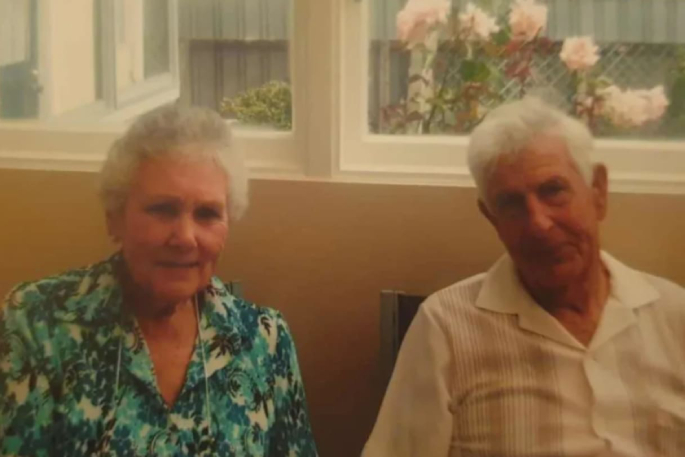Content note: This story contains discussion of medical procedures.
Complications not misadventure caused death.
‘Dirty’ drug protamine caused adverse reaction.
Blood loss not caused by draining leg.
The death of Carmen Walker in Waikato Hospital after a cancer procedure was caused by an adverse reaction to a “dirty” drug as well as blood loss, a coroner has found.
However, the blood loss was not due to excess blood being drained from Walker’s body during the procedure but more likely a combination of other bleeding, Coroner Alexander Ho said.
Coroner Ho, who released his findings into the 2010 death on Friday, found 78-year-old Walker died from complications of the isolated limb infusion procedure (ILI) to treat a melanoma in her leg.
These were blood loss, and an adverse reaction to protamine – a drug used at the end of a procedure to reverse anti-blood clotting medication.
The source of the blood loss was unknown but could have included any combination of gastrointestinal bleeding, internal haemorrhage, the anticipated blood loss as part of the ILI, and external bleeding, Coroner Ho said.
The ILI procedure involves cutting off the circulation to the diseased leg with tourniquets, injecting chemotherapy drug melphalan into the leg to “bathe” the cancerous cells, washing out the limb to remove the drug and tainted blood, then releasing the tourniquets.
Coroner Ho said the “unlikely coincidence of two relatively uncommon events” both occurring had to be assessed against three things:
The high incidence of adverse reactions to protamine at one in 10;
The fact Walker’s blood pressure collapsed only after she received the first small dose of protamine;
And that there was no evidence of severe blood loss until after she crashed into cardiac arrest.
At that point, a second arterial blood gas test showed Walker had a severely low haemoglobin of 28, later deemed by a pathologist to be incompatible with life.
An earlier image of her heart showed the left ventricle “very empty”, indicating hypovolaemia – when the body loses fluid such as blood and water.
The coroner ruled out the tourniquets not working properly.
An unrecognised tourniquet leak could have allowed Walker’s entire circulating blood to seep into the leg and drain out of her body during the limb washout without anyone realising.
But the bucket used to collect the washout did not provide measurements, and the lead surgeon – who has name suppression – told the inquest measured buckets were previously used but resourcing constraints led to their disappearance.
Coroner Ho said resourcing constraints were outside the scope of the inquest and that ILI procedures were no longer performed in New Zealand so he could not make specific recommendations.
“Nonetheless, I observe that, for procedures involving some element of blood drainage, it would be prudent to drain it into a measurable container.”
The coroner accepted evidence from the anaesthetist – whose name is also suppressed – that it was sensible for adverse reaction to be treated as the probable cause of Walker’s crash.
He said her age and physical condition – though fit and active she had hardened arteries and was on beta blockers for high blood pressure – inhibited her ability to tolerate and recover from the complications.
The coroner found the surgeon and anaesthetist did nothing wrong, including during the marathon 90-minute resuscitation.
“Mrs Walker’s death occurred in spite of, not because of, the decisions that were made regarding her resuscitation.”
Coroner Ho also noted the decision of the on-call intensive care specialist, Dr John Torrance, to provide end-of-life care instead of administering the rest of the protamine to stop Walker bleeding out was correct.
However, the pathologist who changed his finding for Walker’s cause of death, prompting the Solicitor-General to reopen the inquiry, was criticised in the 47-page report.
Dr Ian Beer conducted the post-mortem on Walker without her medical notes, which the inquest heard was not an acceptable medical practice, and the coroner preferred the evidence of a former ICU first-year doctor about a potential gastrointestinal haemorrhage over Beer’s testimony that he found none.
Walker’s family told RNZ they were shocked and disappointed with the finding.
Te Whatu Ora Waikato acknowledged the findings and said it recognised the huge loss of Walker.
Timeline:
August 3, 2010: Carmen Walker undergoes procedure at Waikato Hospital and dies.
August 4, 2010: Pathologist Ian Beer conducts autopsy without the hospital notes and concludes Walker died of cardiogenic shock.
April 20, 2011: Coroner Gordon Matenga conducts a “hearing on the papers” and makes the same finding.
May 2011: Dr Adam Greenbaum complains to the Health and Disability Commissioner and copies it to the Medical Council.
January 2013: Waikato DHB’s internal review finds no definitive cause for Walker’s death but that there was a possible leak in the tourniquet, and washout fluid from her leg was not measured.
December 2013: Health and Disability Commissioner Anthony Hill finds care given to Walker was “suboptimal” but takes no further action.
March 2019: Greenbaum and the Walker family petition the Solicitor-General for a full coronial inquest.
August 2020: Deputy Solicitor-General Virginia Hardy declines an inquest.
April 2021: Beer requests the hospital notes from the HDC but is declined.
May 2021: Greenbaum provides Beer with some of the HDC investigation including an Australian expert’s report which said Walker died of hypovolaemic shock.
May 13, 2021: Beer writes to the Coroner to have the cause of death changed to that.
May 27, 2021: Chief Coroner Judge Deborah Marshall writes to the Solicitor-General requesting the file be reopened.
June 1, 2021: Solicitor-General Una Jagose orders further inquiry.
November 2021: Coroner Alexander Ho orders an inquest.
August 2023: Inquest takes place over three weeks in Hamilton.
October 2024: Findings released.
Sign up to The Daily H, a free newsletter curated by our editors and delivered straight to your inbox every weekday.



0 comments
Leave a Comment
You must be logged in to make a comment.